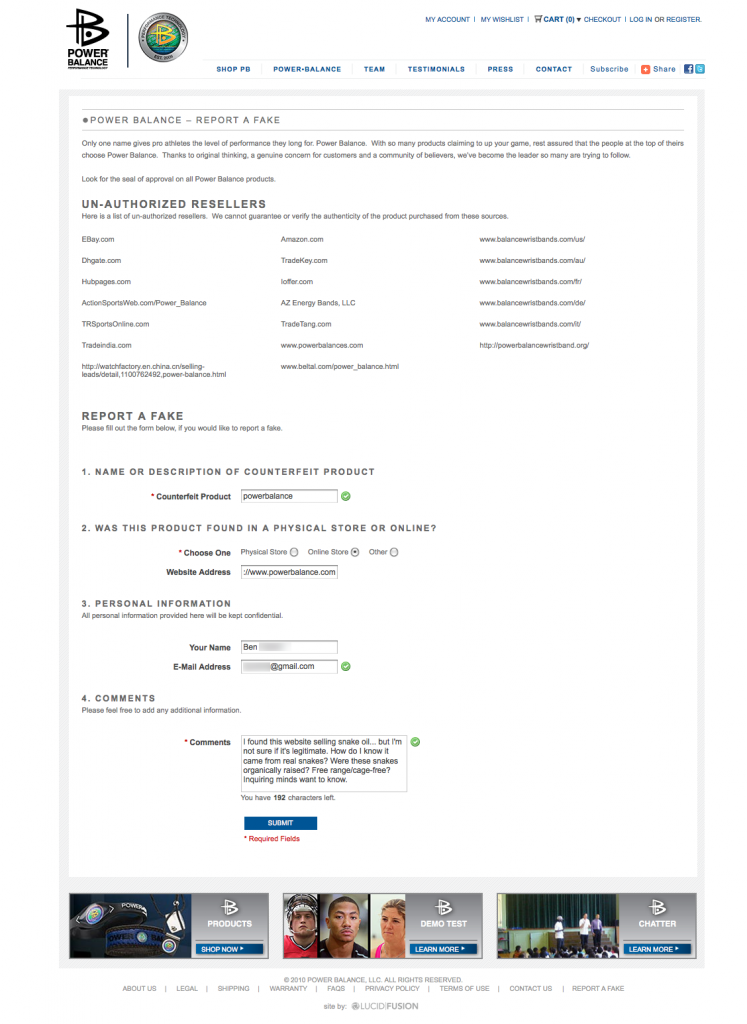“Hey man, I have this awesome new idea for a company!!! Its gonna be like a Facebook/Twitter/MySpace/Google/Etrade/etc. only better. I just need someone to to make a website for me, you know, cause I don’t know too much about computers. Anyways, I know you’re good with programming and stuff, so you in?”
Anyone who has ever worked as a developer has undoubtedly had more than a few such proposals thrown their way by friends, family or even random strangers they talk to on the internet. Their idea will totally revolutionize the way we do things on the internet, but is so simple that making it should be a snap. Unfortunately, these people are not only ignorant about the technology, but most of the time lack any knowledge of the field in which they plan on making said riches. I myself have a monthly ceremony where one of my friends or acquaintances sits me down and very excitedly explains to me their great new idea, how it will make millions by selling it to Google (it’s always Google for some reason) and how they just need me to write the code “real quick.” The most recent such proposals included a stock trading site and a Pandora like site that “does not suck.” After listening to their proposals, I usually spend an hour trying to explain to them why its not going to happen before completely giving up and telling them I am simply too busy to be part of their new capitalizing venture. Lately I have been getting hit with an increased number of these proposals so I thought I might take a couple of minutes and quickly jot down a few facts all you eager entrepreneurs should know about programming and the web.
How Websites Make Money
Before I go go though the list of reasons you probably should not be starting a website business, let me go over one other very important concept: revenue generation. Unless you’re making a site about your cat, the goal of your site is to make money. If you are not actually selling a product, like shoes or tennis balls or frozen lumpia, there are a few ways that online businesses can generate money. First, and what seems to be most popular, is to give away your products and services for free but gather user information and sell it to companies for advertising purposes. Facebook, Twitter and Google all operate on this business model. In point of fact, you are actually the product they are selling, and their services are just how they get you to voluntarily participate. Another popular type of business plan is to sell subscriptions. Sites like Pandora, Netflix and Flickr provide premium services for a nominal monthly or yearly fee. This type of business plan is also very popular, and profitable, for the sites dealing with, lets just say adult entertainment. Other sites generate revenue by charging “as you use” fees. Craigslist is a perfect example of this as they only charge you a fee if you post a job ad, otherwise their site is completely free.
No successful website ever is built on the notion of being bought out. Sure, one of your long term goals can be to sell a product to competitors, but why would a competitor buy a business whose profit plan is to be bought out? Web companies buy other companies for two reasons. One is to absorb the established user base and the other is to acquire technologies that will be cheaper than licensing or redeveloping. Both of these have only one goal: to increase the traffic and overall user base of their site.
The most important part in generating online profit is having a large user base, so unless you have millions of users or a some amazing new algorithm that millions of users will want to use, you’re not getting bought out. In other words, the only sites that get bought out are sites that have already succeeded on their own.
If you want to start a site that will compete with another established site the most important thing to know is what you will do different. Recreating a service that already exists (and if you’re not good with computers will be much worse) will not attract any users to switch over. A new competing site has to be different enough to carve out its own niche before it has any chance of succeeding. For this you need to invest lots and lots of money.
Websites Are Not Cheap
Web businesses have always been more popular because of their low cost overhead. You don’t need a store front, you don’t need sales people, and most times you don’t even have a product you need to store and sell. Most of the technologies you will use are open source and won’t cost you a dime to use. Hell, you don’t even need an office. You can work from home or the ever popular coffee shop. All these things are great, but websites have a lot of other operating costs that people seem to overlook. The domain name registration, DNS hosting, server hardware (or cloud/co-location/hosting fees), bandwidth and the most important of all the people you have to pay to develop and maintain the site. The more popular the site gets, the more expensive it gets and the costs go up very very quickly.
Things whose costs are negligible, or even free, when first starting out can cost a lot of money as soon as you start getting decent traffic. DNS hosting, for example is usually included in the yearly $20 fee you pay for your domain name, but when your site starts attracting users, it can cost you thousands of dollars per month. If you don’t have the cash to keep a site running when it gets popular it will quickly lose its user base and you will be done.
The cost of the people is the biggest cost you will have to cover. Websites are complicated and it takes people with genuine smarts and talent to create something that works and will generate you money. These kind of people tend to be very smart (and usually already employed) and won’t work for nothing. A decent developer can make anywhere from $60k to $130k at a normal 9-5(ish) job. A start-up usually means 14-18 hour days and working with the insecurity of being fired any moment. The only time developers will ever work for free, or as an investment, is if they’re doing it for themselves. Wanting a programmer to build you a site in exchange for future compensation is the same as asking a construction company to build you a house now, and when the market improves you’ll sell the house and split the profits. It’s not gonna happen.
Websites Are Not Simple
As you may know, websites are actually amazing, incredible yet horribly complicated pieces of technology. It may appear simple enough to us, but billions of dollars and man hours have already gone into figuring out how to build sites that do what you want, do it fast and do it reliably. There are many different aspects of a website: the hardware infrastructure, the data stores, the application itself and the user interface. There are of course non-technical aspects as well, such as marketing, management, etc. but I’ll just focus on the technology right now.
Hardware infrastructure consists of servers and services that run the site. These are simply computers that have to be installed, configured, automated and maintained that will host your website. Starting out, you can pay to have another company handle that for you by hosting the site on a cloud or paying for a server at a data center, but as your site grows, chances are you will need to invest into your own hardware and people to take care of it.
The development of the data stores, web application and user interface all come together to work as your site, but require months, if not years of development to get off the ground and even then require constant work. This too can be outsourced, but its not cheap, and ends up costing a lot more than just hiring developers.
Websites Are Not Static, They Evolve
The first thing I try to explain to my dear friends and acquaintances when confronted with this kind of proposal is that you don’t just build a website and that’s it. A website is never actually done. It is a piece of code that constantly keeps evolving. It has to incorporate new technologies and concepts to meet the exponentially growing standards of its users. I will put it this way: think about what you could do with Facebook 5 years ago, 3 years ago, a year ago and now. Facebook has changed its look dozens of times each time improving its usability and adding new features. Its user base only keeps growing.
Sites also need to keep increasing their response times. Every day the public demands to do more, faster than ever before. I keep getting reminded of a Louis CK bit on the Conan O’Brien’s show (YouTube Link) making fun of how fast our expectations go up. A website that does not constantly keep up, crashes and burns real quick.
Websites Need Direction
The most important aspect of a website is having direction and passion. The person in charge needs to know everything I have describes so far and much much more in order to know what to build. If you look at the most profitable tech companies of all times: Google, Microsoft, Apple, Facebook, Cisco, IBM, HP, Dell. The one thing all these companies have in common was that they were started by techies who cared about their product more than they cared about their profits. These are the kind of people who had enough passion for the technology to stay up all night writing software, building computers or solving equations just for fun. To have an idea for a website is easy, but to truly deliver it you have to have the passion for the work and brains to pull it off. If you’re coming to me to make it for you, it means you have neither.
TL;DR
Building and maintaining a website is not as simple as it seems. It takes lots of time, money, brains, talent and passion. If you don’t have most of those, go start a banana stand instead.
 RSS
RSS
